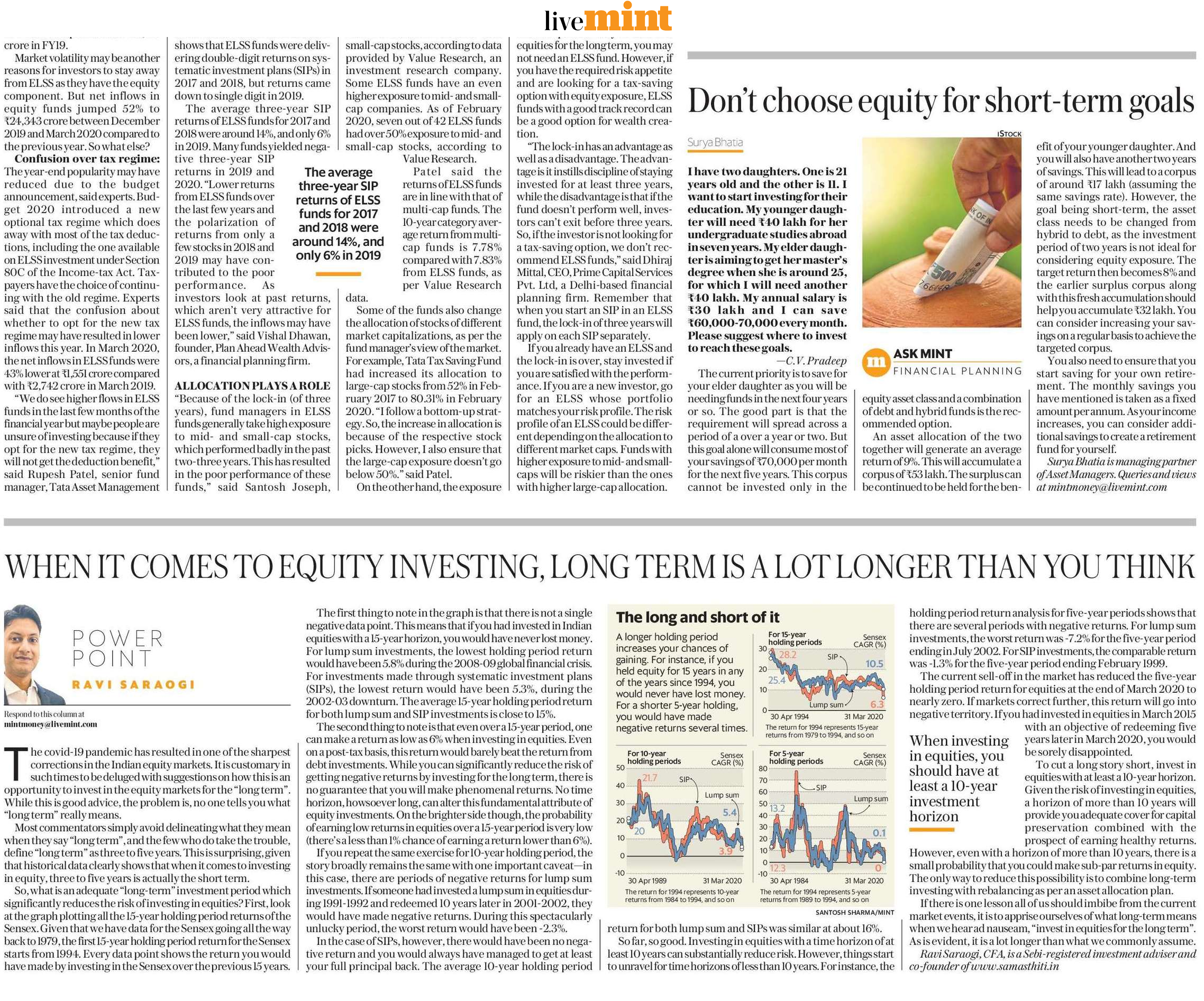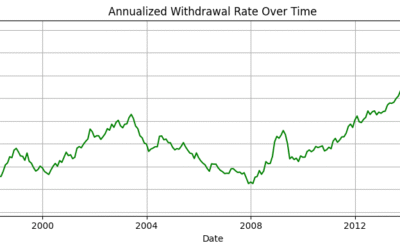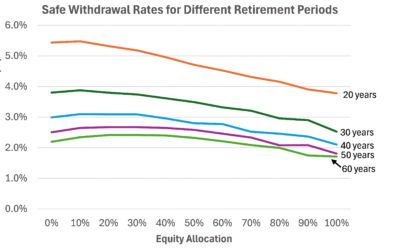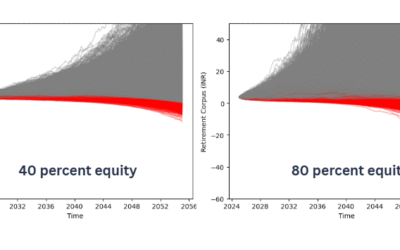When investing in equities, you should have at least a 10-year investment horizon
The covid-19 pandemic has resulted in one of the sharpest crashes in the Indian equity markets. It is customary in such times to be deluged with suggestions on how this is an opportunity to invest in the equity markets for the “long term”. While this is good advice, the problem is, no one tells you what “long term” really means.
Most commentators simply avoid delineating what they mean when they say “long term”, and the few who do take the trouble, define “long term” as three to five years. This is surprising, given that historical data clearly shows that when it comes to investing in equity, three to five years is actually the short term.
So, what is an adequate “long-term” investment period which significantly reduces the risk of investing in equities? First, look at the graph plotting all the 15-year holding period returns of the Sensex. Given that we have data for the Sensex going all the way back to 1979, the first 15-year holding period return for the Sensex starts from 1994. Every data point shows the return you would have made by investing in the Sensex over the previous 15 years.
The first thing to note in the graph is that there is not a single negative data point. This means that if you had invested in Indian equities with a 15-year horizon, you would have never lost money. For lump sum investments, the lowest holding period return would have been 5.8% during the 2008-09 global financial crisis. For investments made through systematic investment plans (SIPs), the lowest return would have been 5.3%, during the 2002-03 downturn. The average 15-year holding period return for both lump sum and SIP investments is close to 15%.
The second thing to note is that even over a 15-year period, one can make a return as low as 6% when investing in equities. Even on a post-tax basis, this return would barely beat the return from debt investments. While you can significantly reduce the risk of getting negative returns by investing for the long term, there is no guarantee that you will make phenomenal returns. No time horizon, howsoever long, can alter this fundamental attribute of equity investments. On the brighter side though, the probability of earning low returns in equities over a 15-year period is very low (there’s a less than 1% chance of earning a return lower than 6%).
If you repeat the same exercise for 10-year holding period, the story broadly remains the same with one important caveat—in this case, there are periods of negative returns for lump sum investments. If someone had invested a lump sum in equities during 1991-1992 and redeemed 10 years later in 2001-2002, they would have made negative returns. During this spectacularly unlucky period, the worst return would have been -2.3%.
In the case of SIPs, however, there would have been no negative return and you would always have managed to get at least your full principal back. The average 10-year holding period return for both lump sum and SIPs was similar at about 16%.
So far, so good. Investing in equities with a time horizon of at least 10 years can substantially reduce risk. However, things start to unravel for time horizons of less than 10 years. For instance, the holding period return analysis for five-year periods shows that there are several periods with negative returns. For lump sum investments, the worst return was -7.2% for the five-year period ending in July 2002. For SIP investments, the comparable return was -1.3% for the five-year period ending February 1999.
The current sell-off in the market has reduced the five-year holding period return for equities at the end of March 2020 to nearly zero. If markets correct further, this return will go into negative territory. If you had invested in equities in March 2015 with an objective of redeeming five years later in March 2020, you would be sorely disappointed.
To cut a long story short, invest in equities with at least a 10-year horizon. Given the risk of investing in equities, a horizon of more than 10 years will provide you adequate cover for capital preservation combined with the prospect of earning healthy returns. However, even with a horizon of more than 10 years, there is a small probability that you could make sub-par returns in equity. The only way to reduce this possibility is to combine long-term investing with rebalancing as per an asset allocation plan.
If there is one lesson all of us should imbibe from the current market events, it is to apprise ourselves of what long-term means when we hear ad nauseam, “invest in equities for the long term”. As is evident, it is a lot longer than what we commonly assume.
(This article was published in LiveMint on April 13, 2020 and can be accessed from the link https://www.livemint.com/money/personal-finance/when-it-comes-to-equity-investing-long-term-is-a-lot-longer-than-you-think-11586801602209.html)







0 Comments